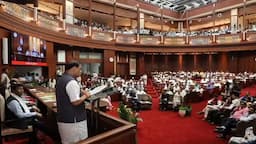In a critical move to avert a potentially crippling escalation in the trade war, the United States and China have agreed to extend their tariff truce by another 90 days. President Donald Trump officially enacted the extension through an executive order on Aug 11—just hours before scheduled duty hikes were set to take effect.
The new deadline for the tariff standstill is Nov 10. During this period, US tariffs on Chinese goods remain at 30%, while China continues to impose 10% duties on US imports. Crucially, these measures prevent duties from spiking to former planned rates of 145% and 125%, respectively.

Trump took to his Truth Social platform to confirm the extension, stating that all other terms of the agreement would remain unchanged. China’s Commerce Ministry echoed the decision, officially suspending further penalties and holding off on adding US companies to its trade and investment restriction lists.
The original 90-day pause, agreed upon in May during talks in Geneva, had temporarily reduced tariffs from triple-digit levels. Follow-up negotiations were held in Stockholm in July, though they ended without firm resolution.

The latest extension reflects both nations’ interest in creating space for deeper talks over bilateral trade imbalances and national security concerns.
Analysts suggest the decision provides critical breathing room for US retailers—still adjusting stocking strategies for the upcoming holiday season—and offers a diplomatic opening for Trump and Xi Jinping to pursue a broader trade deal in the fall.
However, experts warn that consignment of tariff pressure alone isn't sufficient. The curtain remains open for regulatory and negotiation frameworks — covering issues like soybean purchases, semiconductor exports, and rare earth resource access. These topics remain central to the evolving trade dialogue.












